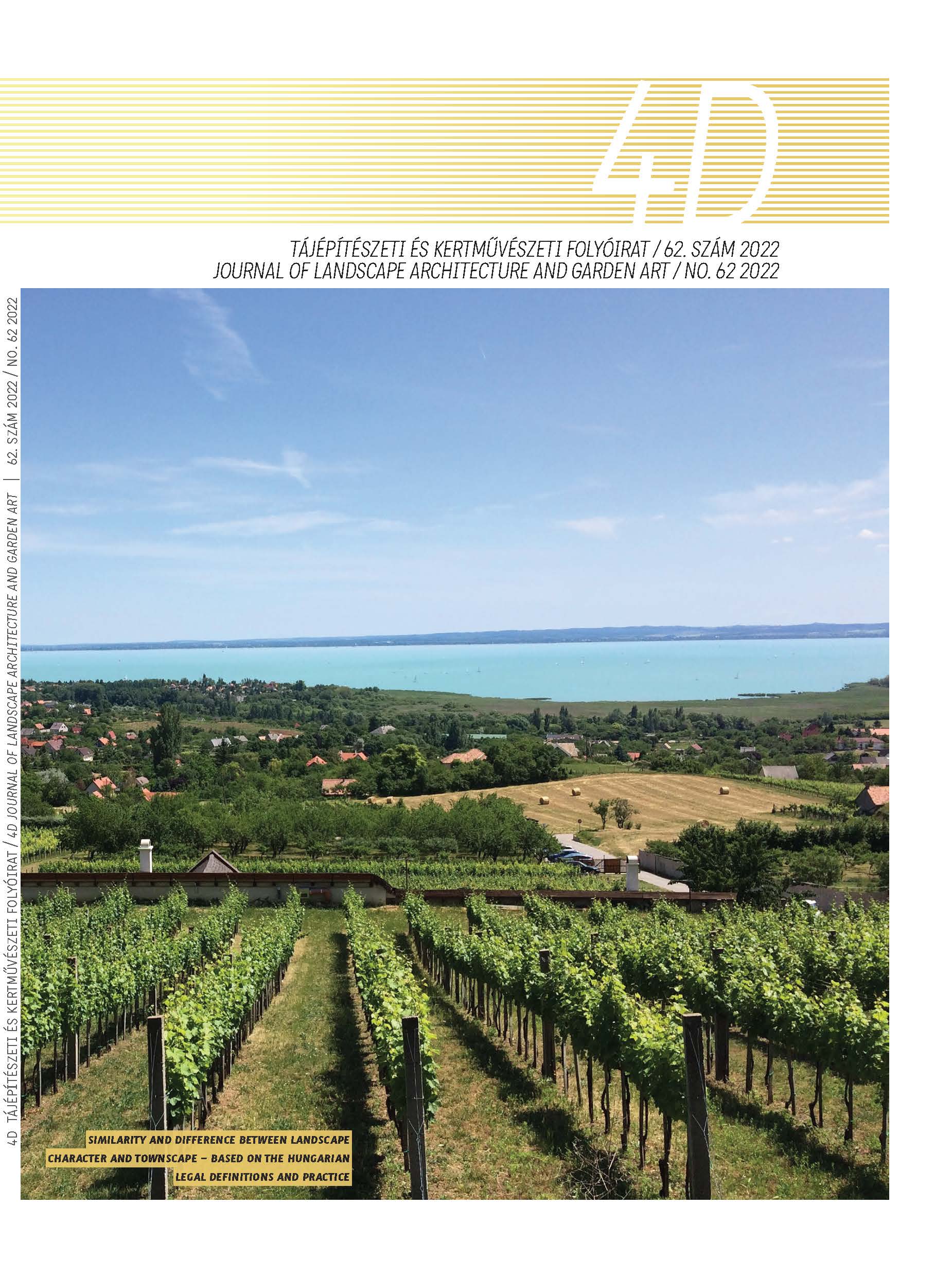Climate Sensitive Urban Grassland Management
DOI:
https://doi.org/10.36249/62.8Abstract
The impact of the loss of natural habitats and biodiversity is often overshadowed by the attention given to climate change. The UN underlines the significance of this issue by declaring 2021-30 the “Decade of Ecosystem Restoration”. In this strive, urban green spaces are becoming increasingly important as a last refuge for many native species of plants and animals.
In recent years, the growing interest for nature-based solutions has also become noticeable in Hungary, from both planners and residents. Urban meadows are scenic elements in the ongoing ecologic transformation of urban green spaces. 'Climate Adaptive Grassland Management in the City', a publication by Ildikó Réka Báthoryné Nagy, PhD and Attila Gergely, PhD (MATE, Institute of Landscape Architecture, Urban Planning and Ornamental Horticulture), Krisztina Bálint and Miklós László Pap (landscape architecture PhD students of the Institute) and Kata Pernesz (landscape architect, head of the park maintenance team in Veszprém Public Service Ltd.), introduces this rediscovered technique by describing its importance, application criteria and implemented examples. The richly illustrated, clearly structured, and scientifically reliable publication provides valuable information for all audiences from professionals and decision-makers to residents.
The reader attains sufficient content to digest and build an understanding of professional aspects. The first half of the book focuses on the characteristics of urban climate and the importance of green spaces and urban meadows. Through detailed explanation, the text provides a concise, scientific basis to answer typical questions related to urban meadows. An important merit of the publication is the establishment of a clear Hungarian nomenclature for the various urban meadow types.
In the second part of the publication, international and local examples of best practice are introduced to illustrate the versatility of the meadows. A reflection on the most significant Hungarian case study “Wildflower Veszprém” running in cooperation of the University and the City of Veszprém, provides a summary of the results obtained between 2016 and 2020.
The authors indicate the essential need for local botanic expertise in project planning and execution, and do not aim to present detailed botanical findings. Their focus is on summarising practical experiences surrounding the methods and costs of green space maintenance and presenting results on increasing biodiversity. These can provide inspiration and support for other municipalities to launch their own urban meadow projects.
The authors go beyond the bare technical aspects by presenting several methods and tools for successful communication, knowledge sharing and community involvement. The publication will certainly be an important mediation tool for the Hungarian stakeholders in the future regarding climate-adaptive grassland management.
Downloads
Published
Issue
Section
License
Copyright (c) 2022 Csizmadia Dóra

This work is licensed under a Creative Commons Attribution-NonCommercial-NoDerivatives 4.0 International License.
A folyóirat Open Access (Gold). Cikkeire a Creative Commons 4.0 standard licenc alábbi típusa vonatkozik: CC-BY-NC-ND-4.0. Ennek értelmében a mű szabadon másolható, terjeszthető, bemutatható és előadható, azonban nem használható fel kereskedelmi célokra (NC), továbbá nem módosítható és nem készíthető belőle átdolgozás, származékos mű (ND). A licenc alapján a szerző vagy a jogosult által meghatározott módon fel kell tüntetni a szerző nevét és a szerzői mű címét (BY).



